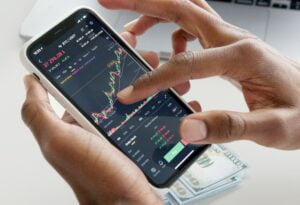On-balance volume, or OBV, is a technical indicator used in stock trading to measure the buying and selling pressure of a stock. It is a line graph that compares the volume of a stock to its price.
To understand OBV, think of it like a scale. When the price of a stock goes up, the scale tips towards the buying side, showing that more people are buying the stock. When the price goes down, the scale tips towards the selling side, showing that more people are selling the stock.
To use OBV, traders look for patterns in the graph. For example, if the OBV line is rising while the stock price is also rising, it is a sign that the stock is in high demand and may be a good buy. On the other hand, if the OBV line is falling while the stock price is also falling, it is a sign that the stock is not in high demand and may not be a good buy.
OBV can also be used in conjunction with other indicators to confirm trends. For example, if the OBV line is rising and the stock is also above its moving average, it is a strong sign that the stock is in a bullish trend.
It’s important to note that OBV is a lagging indicator, meaning it is based on past data and may not predict future trends. It’s important to always use OBV in combination with other indicators and research before making any investment decisions.
In summary, on-balance volume is a technical indicator that compares the volume of a stock to its price. Traders use it to measure buying and selling pressure of a stock and look for patterns in the graph. By using OBV in combination with other indicators, traders can confirm trends and make informed investment decisions.









